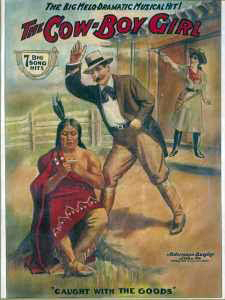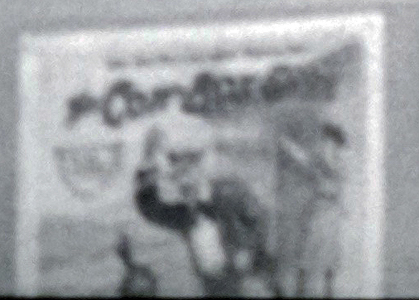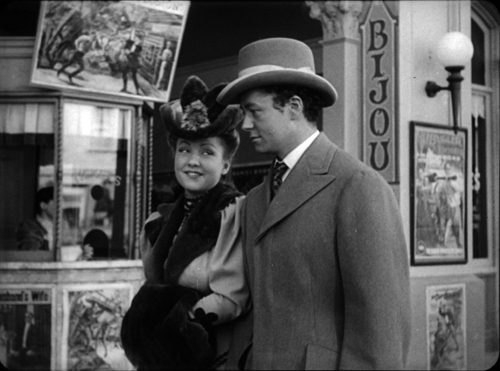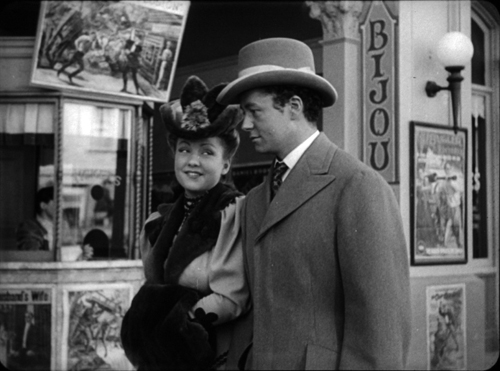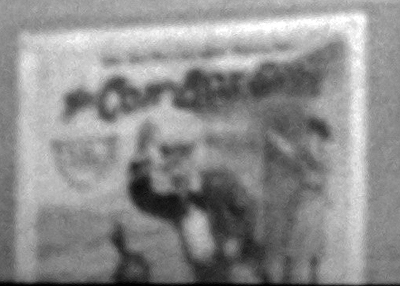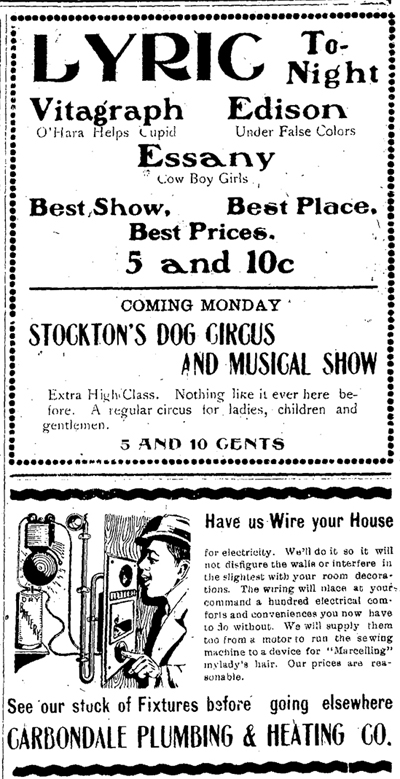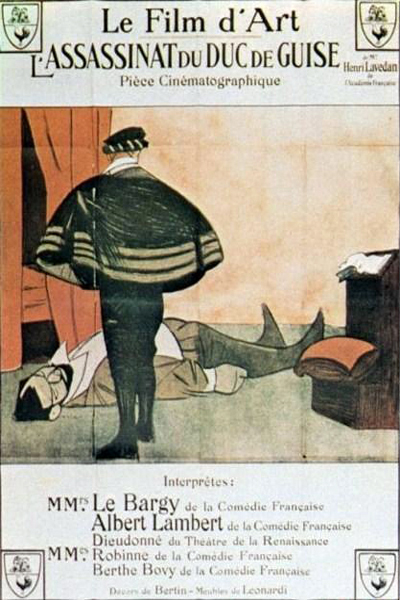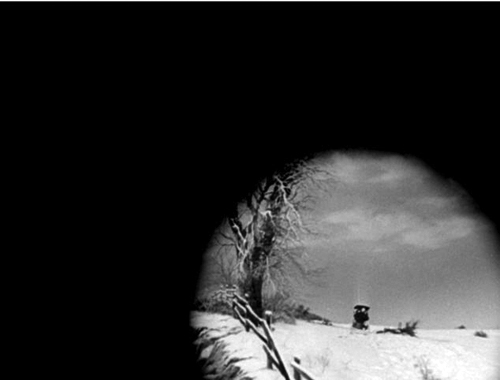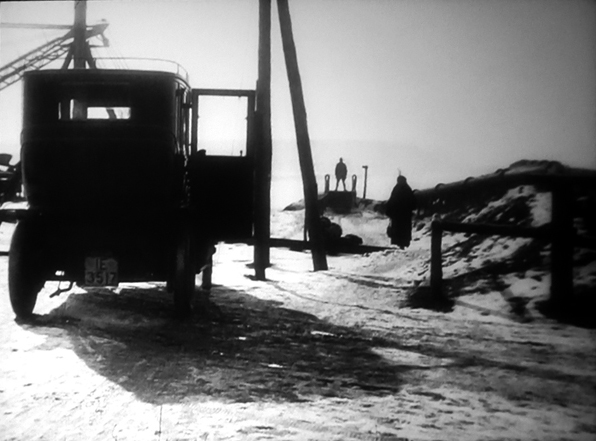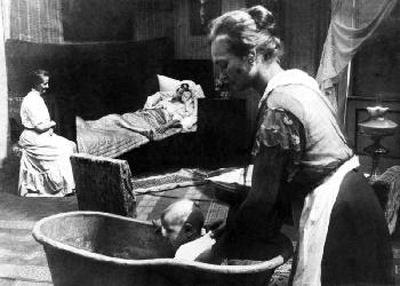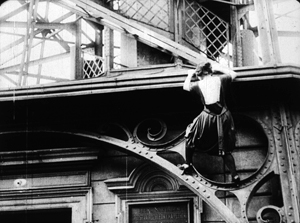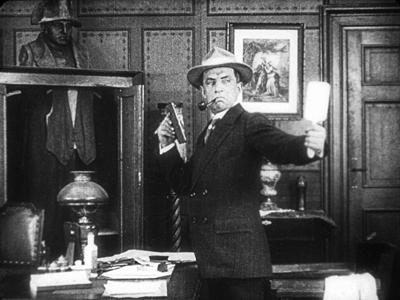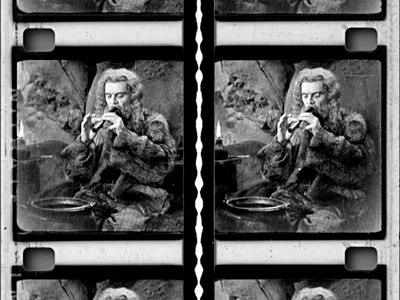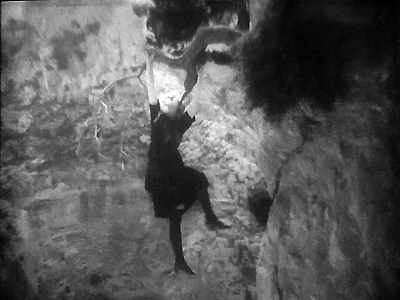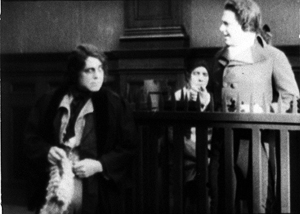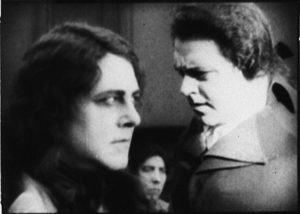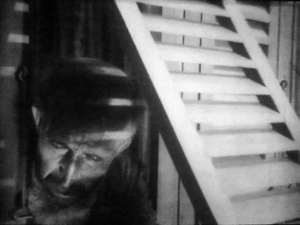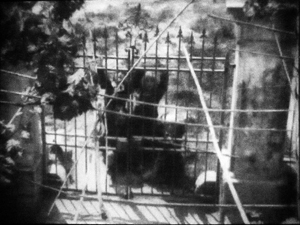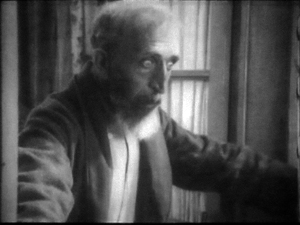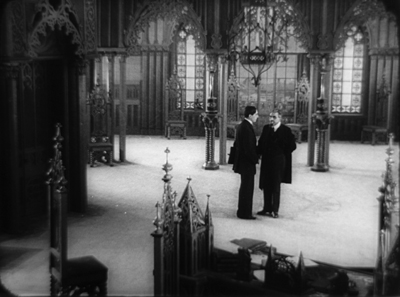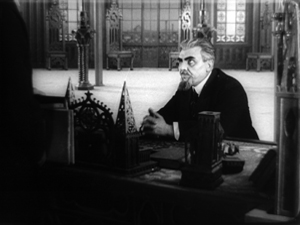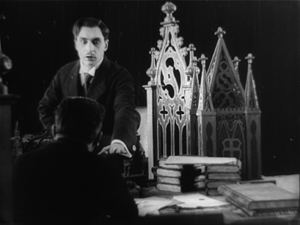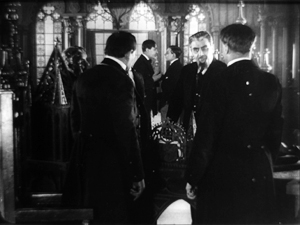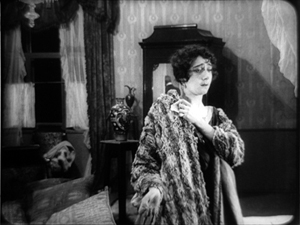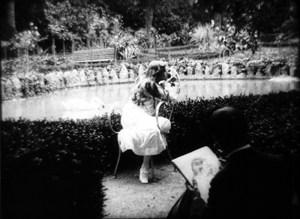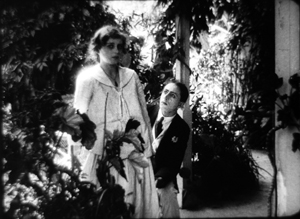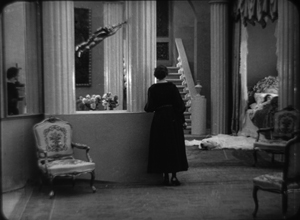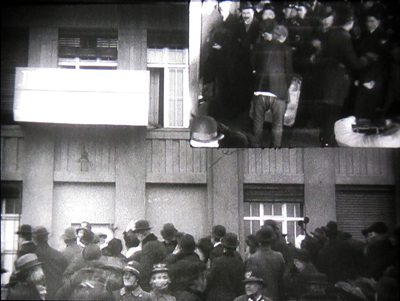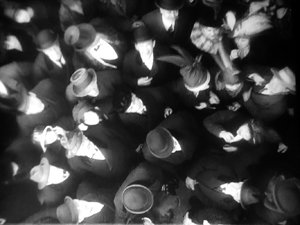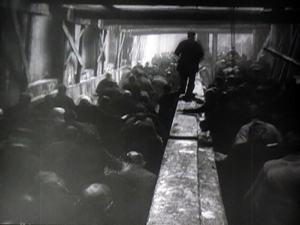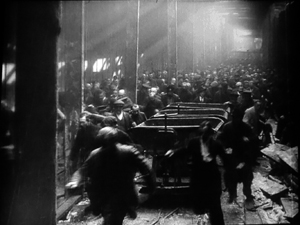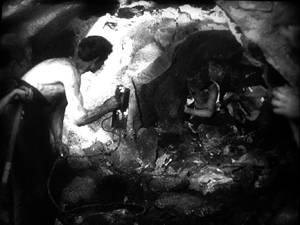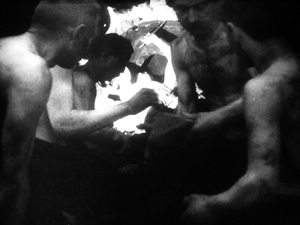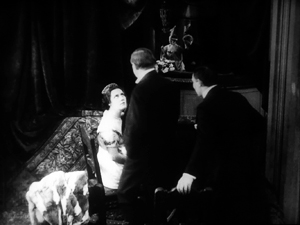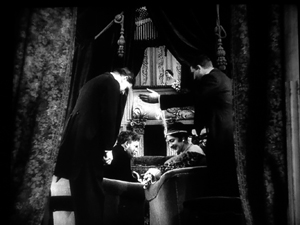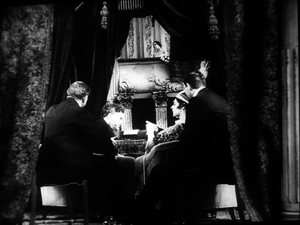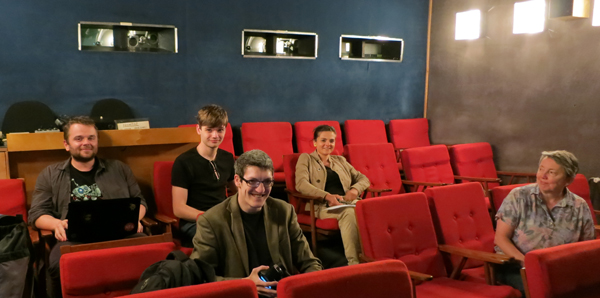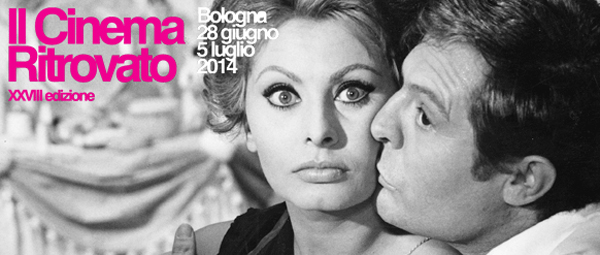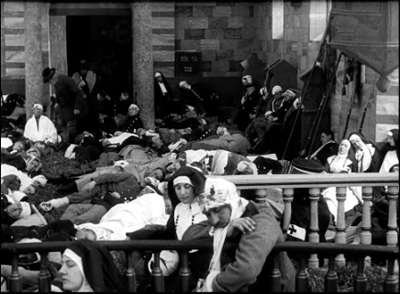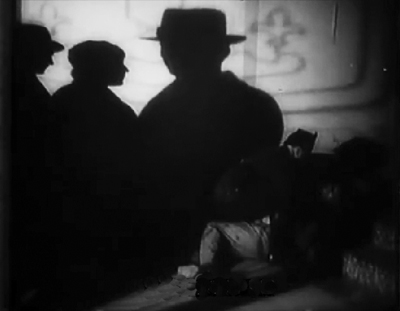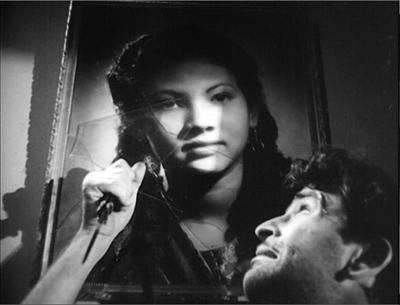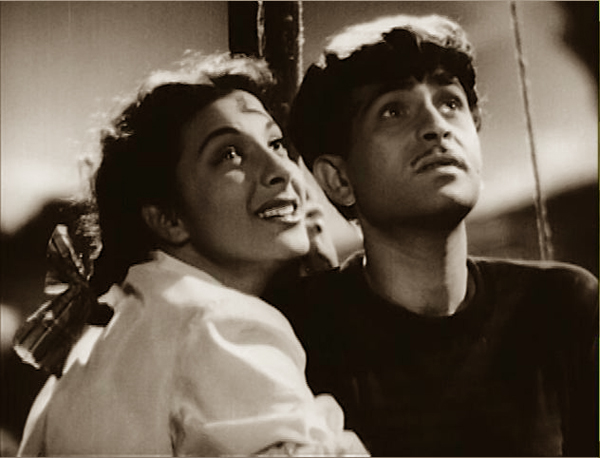Archive for the 'Hollywood: Artistic traditions' Category
The AMBERSONS Poster Mystery: The clincher
DB here:
Bingo! Crowdsourcing pays off. Alert blogger Ivan Paio found the original poster that’s tucked into the Magnificent Ambersons frame! It confirms that Welles used not a film poster but one advertising a stage show…that could have played the Bijou in 1912.
If you’re not familiar with our quest, you can go here and here and here. Be sure to visit Ivan’s site for details, and give him a big hand.
The Fussbudget Report: An AMBERSONS solution
DB here:
Some readers may recall my post on The Magnificent Ambersons back in May. I argued that Welles built a sense of the irretrievable past into many aspects of the film’s narration. He used the voice-over commentary to evoke times gone by, but also ellipsis, offscreen action, constant recitation of memories, and other strategies. In addition, there were moments of cinephile nostalgia, including the iris shot at the end of the snow scene and the concluding credits of the actors slowly turning to face the audience, as in the manner of films of the 1910s.
Then there were the movie posters. George and Lucy are walking through the town. He’s about to leave for Europe, and she feigns a polite lack of concern. They pass the Bijou movie house, which flaunts several posters. I managed to identify all but one, the one tucked in the lower right of the frame above. I just couldn’t properly read the title, even on a good 35mm print.
Blown up from 35, the clearest view we get of it looks like this.
I thought it might be The Coin-Box Girl, but no such film title existed. Some readers– Jacopo Pes, Ivo Blom, and Paolo Cherchi Usai (thanks to all)–proposed some possibilities. Alas, none of their suggestions seemed to fit. Even running through the Library of Congress copyright listings for films didn’t yield a plausible candidate.
Over a lunch with colleague Eric Hoyt last week (Eric is one of the geniuses behind Lantern), we talked about this. Eric had access to a bigger list of titles than that of the LoC, and he suggested that the first words might be cow-boy. Checking his list, we find that there was indeed a May 1912 Pathé release called The Cowboy Girls. It’s also listed in Lauritzen and Lundquist’s American Film-Index 1908-1915 under that name. It might well have been postered as The Cow-Boy Girls. (We now assume that the squiggly line after “Cow” is a hyphen. It might be just a really curly w.) An April 1913 ad from the Carbondale Daily Free Press lists a film called The Cow Boy Girls, so if it’s the same movie, there was some freedom of punctuation around it.
I left the second ad underneath so you can appreciate having electricity.
It would be very nice to check a poster of the film, but I haven’t found one. Here, though, is a synopsis from Moving Picture World of 1912. (Again, thanks to Lantern.)
This doesn’t quite match the image on the poster, which shows a man apparently about to strike a Native American kneeling before him. But in the background, more visible in the half-framed poster, there seems to be a young woman coming out of a cabin protesting, and perhaps brandishing a pistol. (Open Carry applies here.)
There are other anomalies. If this is indeed The Cowboy Girls from Pathé, does the triangular shield logo in the northwest corner boast a rooster? Some Pathé titles did, as for this 1908 French release (one of the most important films ever made). On the four shields, the rooster (also to be seen as decor in Pathé interiors) is joined by the eternal symbol of the theatre, the comic and tragic masks.
And if The Cowboy Girls is a Pathé title, did the Carbondale ad list it as “Essany” (Essanay) by mistake? Or is that a different cowgirls movie? It may be relevant that there was a vaudeville play called The Cow Boy Girl, which was touring at the same period. Filmmakers may have tried to cash in on that. Or maybe the Ambersons Bijou was presenting that stage show rather than a film?
Still, until somebody comes along with a better account, I’m ready to believe that we’ve found the film. The clincher for me is the Cowboy Girls’ date: 1912. Except for the fake lobby card promoting a nonexistent Jack Holt movie, all the discernible film posters in the Ambersons scene are from 1912 releases.
This obsessive synchronization is surely the work of a film nerd, either Welles or a staff member. Geek calls out to geek, from 1912 to 1942 to 2014. See? I’m not the only fussbudget here.
The Magnificent Ambersons (1942).
What’s left to discover today? Plenty.
Der Tunnel (William Wauer, 1915).
DB here:
Being a cinephile is partly about making discoveries. True, one person’s discovery is another’s war horse. But nobody has seen everything, so you can always hope to find something fresh. There’s also the inviting prospect of introducing a little-known film to a wider community–students in a course, an audience at a festival, readers of a blog.
A festival like Bologna’s Cinema Ritrovato (we covered this year’s edition here and here and here) offers what you might call curated discoveries. Expert programmers dig out treasures they want to give wider exposure. Such festivals are both efficient–you’re likely to find many new things in a short span–and contagiously exciting, because other movie lovers are alongside you to talk about what you’re seeing.
A year-round regimen of curated discoveries is a large part of the mission of the world’s cinematheques. This is why places like MoMA, LACMA, MoMI, BAM, TIFF, ICA, and other acronymically identified showcases are precious shrines to serious moviegoing.
But other discoveries are made in a more solitary way. Film researchers, for instance, ask questions, and some of those can really only be answered by visiting film archives. Sometimes we need to look at fairly obscure movies. And despite the rise of home video, there are plenty of obscure movies that can be seen only in archives. It’s here that the programmers of Ritrovato and Pordenone’s Giornate del Cinema Muto come to select their featured programs.
Archive discoveries aren’t predictable, and many are likely to be of interest only to specialists. Such was the case, mostly, with our archive visits this summer. But as in years past (tagged here), all our archive adventures yielded pure happiness.
This time I concentrated on films from the 1910s-early 1920s films because I hope to make more video lectures about this, the most crucial phase of film history. (One lecture is already here.) In our archive-hopping, we saw films I was completely unfamiliar with. I re-watched some films I’d seen before and found new things in them. I detected some things of interest in films I hadn’t known. Most exciting was our viewing of a major film that has gone unnoticed in standard film histories.
In the steps of Jakobson and Mukarovský
Love Is Torment ( Vladimír Slavínský, Přemysl Pražský, 1920); production still.
First stop was Prague, where I was invited to give two talks. At the NFA we saw two films on a flatbed: a portion of Feuillade’s Le Fils du Filibustier (1922) and a cut-down version of Volkoff’s La Maison du mystere (1922), the latter a big gap in our viewing. The expurgated Maison came off as rather drab, lacking nearly all the big moments much discussed in reports like James Quandt’s from a decade ago. So we search on for the full version. . . .
As for the Feuillade: Le Fils du Filibustier was his last “ciné-roman.” Our two-reel segment, which seemed fairly complete, confirmed his late-life switch to fairly fast, Hollywood-style editing, with surprisingly varied angles.Again, though, we yearn to see the entirety of this pirate saga.
On another day the archive kindly screened several 1910s-early 1920s Czech films for us. Our hosts Lucie Česálková and Radomir Kokes translated the titles and provided contexts. Among the choices were Devil Girl (Certisko, 1918), with a protagonist who’s more of a tomboy than a possessed soul; and the full-bore melodrama Love Is Torment (Láska je utrpením, 1919). The plot, outlined here, involves scaling and jumping off a tower, twice. Once it’s a stunt for a film within the film, the second time (below) it’s the real thing.
Radomir explained to us that one of the co-directors, Vladimír Slavínský, seemed in his 1920s films to specialize in building two reels (often the third and fourth) in a “classical” fashion before letting the other three become more episodic. And indeed, most of the late 1910s-early 1920s films we saw were up to speed with other European filmmaking, in their staging, cutting, and use of intertitles.
We look forward to viewing more Czech films as the opportunity arises. A culture that gave us Prague Structuralism is definitely worth getting to know better. In the meantime, the journal Illuminace, edited by Lucie, is injecting a great deal of energy into local film studies, and the archive is entering a fresh phase with its new director, Michal Bregant.
3D excavations
Der Hund von Baskerville (1914).
In Munich, we reconnected with our old friends Andreas Rost, now retired from administering the city’s cultural affairs, and Stefan Drössler, director of the Munich Filmmuseum. We also reunited with the stalwart archivists Klaus Volkmer, Gerhard Ullmann, and Christoph Michel. Talking with them, we realized we hadn’t been back for over ten years. Klaus and Gerhard were warm and helpful during our earlier visits.
One rainy afternoon, Stefan shared his research on the history of 3D. He presented a spectacular PowerPoint, with rare images and some truly startling revelations. He has given this talk at intervals over the years, but it grows and deepens as he discovers more. Accompanying it, he screened some Soviet 3D films, including the 1946 Robinzon Cruzo. This mind-bending item was made with diptych images, so that the projected image turned out to be slightly vertical. The soundtrack runs down the middle.
The director, Aleksandr Andriyevsky, made excellent use of 3D to evoke the stringy vines and protruding leaves of Crusoe’s island. Amid all the talk today about glasses-free 3D, it’s interesting to learn that Soviet researchers prepared such a system. Stefan’s archaeology of 3D, for me at least, was a pretty big discovery.
At Munich we also saw three silent German titles. Two were associated that resourceful self-promoter Richard Oswald. Sein eigner Morder was a 1914 version of Dr. Jekyll and Mr Hyde, directed by Max Mack from Oswald’s screenplay. Shot in big sets, it spared time for the occasional huge close-up. The other film was Oswald’s semi-comic adaptation of The Hound of the Baskervilles (Der Hund von Baskerville, dir. Rudolf Meinert, 1914), which he had already turned into a play. The sleuth isn’t exactly our idea of Holmes (see above), and he isn’t as quick-witted, I thought, but it was an enjoyable item. Dr. Watson has a sort of tablet which picks up messages; Holmes’ orders are spelled out in lights on a grid. Stefan rightly called it a 1914 laptop.
As for the third film: More about that coming up.
The shadow of Hollywood
Les Deux gamines (1921).
At Brussels, thanks to the cooperation of the Cinematek, I was able to see several items for the first time, and two held considerable interest. The short The Meeting (1917), by John Robertson, showed a real flexibility in laying out the space of a cabin both in front of the camera and behind it. Most interior scenes in 1900-1915 cinema bring characters in from a doorway in the rear of the set (as Feuillade does in his 1910s films) or straight in from the sides, perpendicular to the camera (as Griffith tends to do). The Meeting shows that the diagonal screen exits and entrances that we see in exteriors were coming into use in interior sets as well.
Another 1917 film, Frank Lloyd’s A Tale of Two Cities, was further support for the idea that American continuity filmmaking was well-established and already being refined at the period. Dickens’ classic tale is handled with dispatch–rapid exposition, smooth crosscutting to set up the plot lines–and the film makes dynamic use of crowds surging through well-composed, starkly lit frames. There are also some remarkably expressive close-ups, evidently made with wide-angle lenses.
To clinch a plot point, the resemblance of aristocrat Charles Darnay to British solicitor Sydney Carton, the star William Farnum plays both characters. Not much of a problem if you keep the characters in separate shots; the good old Kuleshov effect (aka known as constructive editing) makes it easy. At this period, though, filmmakers were perfecting ways to show one actor in two roles within a single shot. The most famous examples involve Paul Wegener in The Student of Prague (1913) and Mary Pickford in Stella Maris (1918).
Cinematographer George Schneiderman contrives some really convincing multiple-exposures showing Farnum as both Darnay and Carton. There are some standard trick compositions putting Farnum on each side of the screen, but several images take the next step and let the actor cross the invisible line separating the two halves. At another point, we get a flashy passage showing the two facing one another in court, followed by a “Wellesian” angle of the two characters’ heads in the same frame.
Hollywood’s pride in photorealistic special effects, so overwhelmingly apparent today, has deep roots.
Part of my Brussels visit involved checking and fleshing out notes on certain films I saw many years ago. Some were wonderful William S. Hart movies like Keno Bates, Liar (1915; surely one of the best film titles ever). There was, inevitably, Feuillade as well. The influence of Hollywood was powerful in the ciné-roman Les Deux gamines (1921). This baby, released in 12 parts originally, runs nearly 27,000 feet. At 20 frames per second, it would take six hours to screen. What with changing reels, making notes, counting shots, pausing to study things, and taking stills, Kristin and I took about ten hours to watch it.
Was it worth it? An adaptation of a popular stage melodrama, it can’t count as one of Feuillade’s major achievements. Two girls are left alone when their mother is reported dead. They are adopted by their gloomy grandpa and tormented by his overbearing housekeeper. They become the target of kidnapping by gangster pals of their father, who has divorced their mother and turned to a life of petty crime. Their allies are their young cousins, a wealthy benefactor, and their godfather and music-hall star Chambertin. Everything ends happily, if you count the father’s redemptive sacrifice on behalf of a pregnant woman.
Les Deux Gamines is determined to delay its ending by any means necessary. Form here definitely follows format; Feuillade fills out the serial structure with plots big and small. (Shklovsky would love it.) There are incessant abductions, escapes, rescues, coincidental meetings, and timely reformations, plus at least three cases of people wrongly assumed to be dead. All of this is accompanied by an endless exchange of telegrams and letters. People are forever piling into and out of carriages, train cars, and taxis. Such material serves as makeweight for some genuinely big moments, including a cliff-hanging scene and a stunning climax in a smuggler’s warehouse stuffed with gigantic bales of used clothing.
Like Le Fils du Filibustier, this film shows Feuillade trying to change with the times. The supple long-take staging of Fantômas and Les Vampires and Tih-Minh mostly goes away, to be replaced by rapid editing. Feuillade employs standard continuity devices, as when the grandfather discovers that the kids have sneaked out at night and are trying to return by scaling the gate.
Feuillade varies his angles and lighting to accentuate the moment of visual discovery. Elsewhere, some appeals to “offscreen sound” (cutaways to doorbells and telephones) built up to a surprise effect.
But by the energetic standards of, say, Robertson or Lloyd several years earlier, Les Deux gamines is fairly timid. Feuillade doesn’t explore editing resources very much here, not even as much as in Le Fils du Filibustier. The fairly quick cutting pace stems partly from the stratagem of having dialogue titles interrupt static two-shots of characters talking to one another. This sort of proto-talkie-technique yields efficient storytelling but not much visual momentum. Feuillade tried flashier things in other films of the period (see here).
Hours and hours of nothing but Bauers
The Alarm (1917).
Yevgeni Bauer, one of the master directors of the 1910s, remains lamentably unknown. About two dozen of his over seventy films survive, but many of the ones we have lack intertitles. A few of his films are available on DVD (most obviously here; less obviously here). He died of penumonia in 1917, between the February revolution and the Soviets’ coup d’état in October. He was only 52.
My first archive-report entry back in 2007 recorded my interest in Bauer, and I’ve returned to his films over the years. Now here I was watching some again, confirming things I found of interest then, and discovering (that word again) new felicities. I hope to say more in those short video lectures on the 1910s, but I can’t leave without giving you a taste of his qualities.
Two of the films I saw this time were from 1917. The Alarm (Nabat) came out in May 1917, just before Bauer’s death in June. Originally running eight reels, it was cut down after the initial release, and that’s evidently the version we have. For Luck (Za Schast’em, September 1917) was directed by Bauer from his sickbed. Both films are fairly hard to follow. The Alarm lacks intertitles, and For Luck has many fewer than it had originally.
The two films are of exceptional interest, though. For one thing, there’s the involvement of Lev Kuleshow, who at the age of eighteen served as art director for the earlier film and, apparently reluctantly, as an actor in the later one. More important, the films remain as beautifully designed, staged, and acted as ever.
The Alarm is a wide-ranging drama set before the February upheaval. The drama involves romantic intrigues among the upper class, interwoven with a workers’ rebellion against a master capitalist. The millionaire Zeleznov holds court in a vast office with chairs bearing ominous spires and spiky arches; the windows open onto a view of his factory. A long-shot view is above; here’s a sample of how Bauer shows off his decor in something akin to shot/ reverse-shot.
The idea of capitalism as an overreaching religious striving is evoked by turning Zeleznov’s headquarters into a Symbolist cathedral. And looking at the second shot, you wonder whether Kuleshov’s inclination to stage his own scenes against pure black backgrounds has its source in his work for the man he called “my favorite director and teacher.”
As ever, Bauer makes fluid use of depth. He choreographs meetings of Zeleznov’s brain trust in ever-changing arrangements, and he eases a man out of a boudoir through a mirror reflection over a woman’s fur-draped shoulder.
Compared to the scale of The Alarm, For Luck is decidedly low-key–a bourgeois melodrama that extends barely beyond an anecdote. Zoya has been a widow for ten years, and she hopes to marry the loyal family friend Dmitri. But Zoya’s daughter Lee hasn’t yet reconciled to losing her father. The couple hope that Lee has worked out her grief during her dalliance with a young painter (played by Kuleshov), but she reveals that all along she has hoped to marry Dmitri.
The Alarm used some extravagant sets, both for interior and exterior scenes, but a good deal of For Luck takes place in parks and terraces. The sincere Enrico sketches Lee in front of swans, and they steal some moments in a bower.
Still, there are some interiors boasting Bauer’s famous pillars and columns, which create massive, encapsulated spaces. Here Zoya looks off, in depth, at the ailing Lee, in bed on the far right.
Sharp-eyed Bauerians will notice the mirror set into the left wall, reflecting Zoya. Kuleshov, who did art direction on this as well as The Alarm, worried more about the trumpet-blowing Cupid floating between the pillars on the left. (“It turned out bad on the screen–incomprehensible and inexpressive.”) He did think that the tonalities of the set worked well: “As an experiment, I put up a set painted in shades of white that were ever so slightly different from one another.”
“Ever so slightly different” isn’t a bad evocation of the tiny variations of shape and shade, light and texture, that characterize Bauer’s ripe, sometimes overripe, imagery. This is a social class on the way out, but it leaves behind a great glow.
Tunnel: Vision
The Tunnel (1915).
In 1913, the popular novelist Bernhard Kellermann published Der Tunnel. It’s not quite science-fiction, more a prophetic fiction or realist fantasy in the vein of Things to Come. The book became a best-seller and the basis of a 1915 film directed by William Wauer.
The plot would gladden the heart of Ayn Rand. A visionary engineer persuades investors to fund building an undersea railway connecting France to the United States (specifically, New Jersey). No meddling government gets in the way of this titanic effort of will. Max Allan buys land for the stations, hires diggers from around the world, and risks everything he has. The obstacles are many. An explosion scares off workers; there is a strike; impatient stockholders raid and burn the company headquarters.
Max Allan moves forward undeterred, though he hesitates when his wife and child are stoned to death by a mob. After twenty-six years, the railway is opened. Max, along with his new wife (the daughter of his chief backer), proves it’s safe by taking the first transatlantic train. The event is covered by television, projected on big screens around the world (above). In the original novel, a film company was commissioned to document every stage of work.
The book skimps on characterization, and the film is even less concerned with psychology. Once the character relations are sketched, Wauer goes for shock and awe. The Tunnel‘s thrilling crowd scenes of work, fire, devastation, riots, and panic look completely modern. Bird’s-eye views of stock-market frenzy anticipate Pudovkin’s End of St. Petersburg, and Wauer creates an Eisensteinian percussion of light and rushing movement as workers flee the tunnel collapse.
For the sequences showing the tunnel construction, Wauer supplies violent alternations of bright and dark as men, stripped and sweaty, attack the rock face. The variety of camera positions and illumination is really impressive.
Comparisons with The Big Film of 1915 are inevitable. The intimate scenes of The Tunnel are far less delicately realized than the romance and family life of The Birth of a Nation, and the battle scenes in Birth have a greater scope than what Wauer summons up. But Wauer’s handling of crowds is more vigorous than Griffith’s riots at the climax of Birth, and his pictorial sense is in some ways more refined, even “modern.” There’s little in Birth as daringly composed as the static long shot surmounting today’s entry.
Wauer can handle small-scale action very crisply. The opening scene in an opera house creates low-angled depth compositions more arresting than Griffith’s depiction of Ford’s Theatre. Max’s wife, in one box, is watching his efforts to attract funding from the millionaire Lloyd. Wauer constantly varies his camera setups to highlight Max’s wife in the background studying Lloyd’s daughter, sensing in her a rival for her husband. Whether the angle is high or low, the wife’s presence in her distant box is signaled at the top of the frame.
The second and third shots above present similar but not identical setups, adjusted to reset the depth composition.
It was at Munich’s Filmmuseum a decade ago that I first encountered the brooding power of Robert Reinert’s Opium (1919) and Nerven (1919), the latter now available on DVD. I was convinced that Nerven was as important, and in some ways more innovative, than the venerated Caligari. Now the conviction grows on me that in The Tunnel we have another galvanizing, outlandish masterwork of the 1910s. I hope it will somehow get circulated so that wider audiences can discover it. Yeah, that’s the word I want: discover.
Without archivists, no archives. We’re grateful to Michal Bregant, head of the Czech Republic’s archive, for access to films and for his companionship during our visit. Thanks as well to Lucie Česálková, our host; her knowledgable colleague Radomir Kokes (who kindly corrected the initial version of this post); Petra Dominkova, our Czech translator; and Vaclav Kofron, editor of the Czech versions of our books. Lucie supplied the frame enlargement from Love Is Torment. As well: Good luck to the Kino Světozor!
In Munich, we owe a huge debt to archive chief Stefan Drössler, for his generous sharing of information and his and Klaus Volkmer’s rehabilitation of The Tunnel. Stefan also provided the images from Robinson Crusoe and The Hound of the Baskervilles. Coming up is his work for the annual Bonn International Silent Film Festival, 7-17 August. Thanks as well to Gerhard Ullmann and Christoph Michel.
In Brussels, as ever, the Cinematek has made us welcome, and we thank archive director and long-time friend Nicola Mazzanti and vault supervisor Francis Malfliet. Over the last thirty years, a great deal of our research has depended upon the cooperation the Cinematek leadership: Jacques Ledoux, Gabrielle Claes, and now Nicola.
My quotations from Kuleshov come from Silent Witnesses: Early Russian Films, 1908-1919, ed. Yuri Tsivian and Paolo Cherchi Usai (Pordenone: Giornate del Cinema Muto, 1990), 388-390.
There’s a chapter on Feuillade in my Figures Traced in Light, where Bauer is discussed as well. My essay on Robert Reinert is in Poetics of Cinema.
Thanks to Antti Alanen for correction of a misspelled title. Speaking of discoveries, you’ll find plenty on his wonderful Film Diary site. During his recent trip to Paris, he’s writing about art exhibitions, Dominique Paini’s Langlois exposition at the Cinémathèque, and Godard’s Adieu au langage.
Screening at the Czech Republic’s National Film Archive. From left: Michal Večeřa, Tomáš Lebeda, Radomir Kokes, Lucie Česálková, and Kristin.
12 hours, Ritrovato time
DB here:
Reporting on the magnificent Cinema Ritrovato festival at Bologna has become a tradition with us, but it’s become harder to find time during the event to write an entry. The program has swollen to 600 titles over eight days, and attendance has shot up as well; the figure we heard was over 2000 souls. The organizers–Peter von Bagh, Gian Luca Farinelli, and Guy Borlée–have responded to requests for more repetition of titles by slotting shows in the evening, some starting as late as 9:45. (You can scan the daily program here.) There are as well panel discussions, meetings with authors, and some unique events, such as carbon-arc outdoor shows, the traditional screenings on the Piazza Maggiore, and Peter Kubelka’s massive and mysterious Monument Film. Add in time to browse the vast book and DVD sales tables, and the need to socialize with old friends.
In all, Ritrovato is becoming the Cannes of classic cinema: diverse, turbulent, and overwhelming. How best to give you a sense of the tidal-wave energy of the event? I’ve decided to take off one morning and write up just one day, Monday 29 June. I don’t know when Kristin and I will find time to write another entry, for reasons you will discover.
9:00 AM: Ned Med Vaabnene! (Lay Down Your Arms!, 1914) was a big Danish production, based on a popular anti-war novel by the German Bertha von Suttner. It’s a remnant of the days when the rich went to war along with the common folk. (Sounds quaint in today’s America, where the elite have other priorities.) The Nordisk studio specialized in “nobility films,” melodramas that show the upper class brought low by circumstances; Dreyer’s The President (1919) is another example. The film, directed by Holger-Madsen, shows a family devastated by war and its aftermath. It’s shot in tableau style, with the restrained acting and sumptuous, light-filled sets characteristic of Nordisk. The combat scenes are remarkably forceful, but the most harrowing scene, for me, is the shot showing a battlefront hospital, with exhausted nuns and wounded men strewn around the shot–a tangle of limbs and heads.
Premiered soon after the Great War broke out, Lay Down Your Arms! anticipates Nordisk’s wartime policy. Denmark was a neutral country, and the Danish industry depended on both the German and the American markets. As a result, most of the films studiously avoided taking sides. After the war, with the revival of the German industry and the circulation of American films in Europe, Nordisk lost its powerful position in the international market.
The entire film is available for viewing online at the Danish Film Institute site.
Programmer Mariann Lewinsky, in charge of the “100 Years Ago” thread, wisely included other pacifist films from the mid-teens. One of the high points was the evening screening, on the Piazza Maggiore, of the fine Belgian film Maudite soit la guerre (1914), in the hand-colored version I discussed some years back. Not by accident, I suspect, Lay Down Your Arms! featured several Lewinsky dogs.
10:30 AM: Werner Hochbaum was an unknown name to me, but after seeing Morgen beginnt das Leben (Life Begins Tomorrow, 1933), I realized that was my loss. This story of a cafe violinist released from prison is a sort of anthology of 1920s International Style devices: canted angles, rapid montages, City Symphony passages, flamboyant camera movements, multiple-image superimpositions, and huge close-ups of faces, hands, and objects. The work on sound is no less ambitious, with voice-overs, sound motifs (a carousel, a canary’s call-and-response to a chiming doorbell), offscreen dialogue, and harsh auditory montages of traffic and city life. Everything from Impressionist subjective-focus point-of-view to Expressionist shadow work comes into play.
The plot is gripping throughout. At first we don’t know why the violinist was imprisoned, and we learn about the case first from his gossiping neighbors (excellent run of whispers during fast-cut close-ups of housewives), then from his own flashbacks, which build up to a revelation of the murder he committed. Threaded with all this is another uncertainty: Has his wife begun a love affair while he was in jail? Giving us only glimpses of her life as a cafe waitress, Hochbaum leads us to suspect that he will come home to more misery–and perhaps another temptation to murder.
Along with all this were arresting side scenes of cafe life, like a fat woman ordering up a gigolo to dance with her, reminiscent of Georg Grosz and the New Objectivity’s cynical portrait of daily desperation. It’s a lot to pack into 73 minutes, but Morgen beginnt das Leben succeeds smoothly and made me want more. Alex Horwath‘s introduction confirmed that this is a director we should know better. We can hope that a DVD edition is coming soon.
Noon: A packed house for the panel of three American studio archivists: Schawn Belston of Twentieth Century Fox, Grover Crisp of Sony, and Ned Price of Warners. Too many ideas to summarize here, but one that emerged: Digital tools are great for restoration, not so reliable for preservation.
Ned (left) emphasized that now scanners are very sensitive to the oldest negatives, with their shrinkage and warpage. But Ned pointed out that today’s monitors don’t often render the full color scale needed to respect film’s tonal range, so that weak monitors mean that we are “working blind” and may “bake in” flaws that will be evident when display devices improve. Likewise, low bit-depths (often only 10-bit) in outputting to film for preservation can cause problems later. Grain reduction is another big problem. Grover (center) added: “When you do anything to grain, you’re denaturing the film.”
On the restoration front, Schawn showed clips from the 1959 Journey to the Center of the Earth, first from a beautiful photochemical restoration of twelve years ago, then from a recent digital one. To my eye, the warm skin tones of the 35mm image were more attractive than the almost porcelain surfaces of the digital version, but the latter was sharper and contained a healthy amount of grain. Grover screened A/B comparisons of the main titles of Only Angels Have Wings and Vaghe stelle dell’Orsa (Sandra ), both of which showed how handily digital restoration creates a rock-stable image, without the jitter and weave unavoidable with a strip of film.
All the panelists agreed that digital restorations are rapidly improving; ones finished only a few years ago could now be done better. A major problem coming up is that younger restoration workers know the digital tools better than the look and feel of photochemical, particularly the surface of older films. Grover recalled that one eager techie added flicker to a Capra silent because he thought that was how old movies looked.
1:15 PM: Hurried lunch with Schawn. Main topic: The Grand Budapest Hotel, but also the vagaries of the DVD and Blu-Ray market.
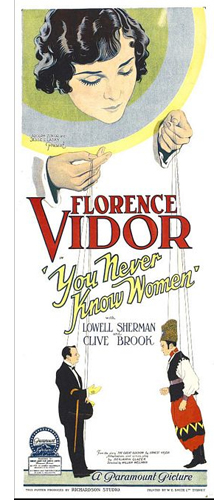 2:30 PM: Ritrovato has mounted an ambitious William Wellman series, and though I’d seen most of the films on the program, I had to catch two 1920s titles.
2:30 PM: Ritrovato has mounted an ambitious William Wellman series, and though I’d seen most of the films on the program, I had to catch two 1920s titles.
You Never Know Women (1926) is an exercise in good old classical storytelling. The plot presents Vera (Florence Vidor), star of a troupe of Russian entertainers, momentarily entranced by a no-good millionaire who wants to seduce her. The magician of the troupe, Norodin (Clive Brook) loves her, but she’s unaware of her feelings for him until the Lothario’s true nature is exposed. El Brendel adds spice as a clown devoted to his pet duck.
Variety‘s review was ecstatic, claiming that “Wellman at the megaphone lifts himself into the ranks of select directors with by his handling of this story, for his direction is never obvious or old-fashioned.” I’ll say. Filled with running gags, seesawing conflicts, and motifs (Ivan’s skill at knife-throwing, the expletive, “Ridiculous!”), You Never Know Women has a headlong pace. With nearly a thousand shots in 70 minutes, it relies on glances, gestures, and reactions to channel the dramatic flow. It needs only three expository titles, letting its 100 or so dialogue titles pinpoint key emotional transitions. In anticipating the sound cinema that was just around the corner, You Never Know Women resembles the more famous Beggars of Life (1928, given pride of place at Ritrovato), which as I recall uses dialogue titles exclusively.
The Man I Love (1929) tells the familiar story of a prizefighter who, as he rises in the game, leaves his loyal woman behind. As an early sound film, it relies on multiple-camera shooting for extended dialogue scenes, but Wellman enlivens the staging with unusual angles, including a view of a quarrel seen through a window in a dressing-room door. The Man I Love boasts the sort of ambitious, somewhat bumpy tracking shots we sometimes find in early talkies. One swaggering camera movement takes us from the locker room into an arena, down the aisle, past the ring, and to Dum Dum’s anxious wife in the crowd, a sketchy prefiguration of the celebrated Steadicam movement in Raging Bull. The fight scenes, not requiring sync sound, are shot with brio, while the dialogue scenes are extremely well-miked, allowing for fairly fast line readings and varied volume and emphasis in the voices.
Gina Teraroli and David Phelps, along with other colleagues, have assembled a wide-ranging dossier on Wellman’s work that serves as a fine complement to the Ritrovato thread.
5-something PM: One of the things in the first edition of our Film History: An Introduction that made me proud was the inclusion of sections on Indian cinema, a subject usually ignored in textbook surveys. I remember in the late 1980s and early 1990s watching the 1950s-1960s classics of Hindi filmmaking with a sense of discovery: How could we not have known this invigorating tradition? It was therefore with a sense of homecoming that I visited Raj Kapoor’s Awara (“The Vagabond,” 1951), in a pretty sepia-tinted print.
The young ne’er-do-well Raj (no last name, and this is important) is on trial for attacking a judge in his home. A female lawyer, Rita, takes up his defense and urges the judge, on the witness stand, to tell why he expelled his wife from his home many years ago. The wife had been kidnapped by the gangster Jagga, and the judge assumed that the child she was now expecting was Jagga’s. Before the courtroom, Rita recounts up the story of how young Raj, actually the judge’s legitimate son, took up a life of crime. To add spice, Rita is the judge’s ward and Raj’s lover.
No coincidence, no story, they say, and Awara offers plenty of timely misunderstandings and improbably neat encounters. No matter. We’re told that TV narrative, by stretching its tale over several hours, can introduce novelistic breadth, but so can Indian classics of the 1950s. This one takes us across twenty-four years and as many ups and downs as a mini-series might offer. Not to mention Kapoor’s vigorous visual style, with huge sets, vivacious fantasy sequences, and traces of 1940s Hollywood hysteria (chiaroscuro, fluid track-ins to overwrought faces, even thunder and lightning in the distance). Here Raj, about to stab the judge, shatters the childhood picture of Rita; her simple gaze checks his moment of revenge.
Then there are the songs, lusciously sung by Lata Mangeshkar and Mukesh. Of course the sprightly “Awara Hoon” is the official classic and Kapoor’s signature tune, but this time around my favorite was the duet, “I wish the moon…,” with Rita asking the moon to look away and Raj asking it to turn to him. With its glamorized social realism, its tale of a good boy gone wrong, unjustly punished, and eventually redeemed, and its primal themes of mothers, fathers, and sons, Awara is a milestone in the world’s popular cinema…. and just one of several Indian classics in this year’s Ritrovato.
That was one day. Now I’m off to…what? Polish films in widescreen? The Riccardo Freda retrospective? The rare Ojo Okichi? Or maybe the restored Oklahoma!? In any case, this afternoon an incontro on Nicola Mazzanti‘s book 75000 films, and tonight Guru Dutt’s glorious Pyaasa.
I tell you, it’s hard to keep up, running on Ritrovato time.
Nargis and Raj Kapoor sing to the moon in Awara.












